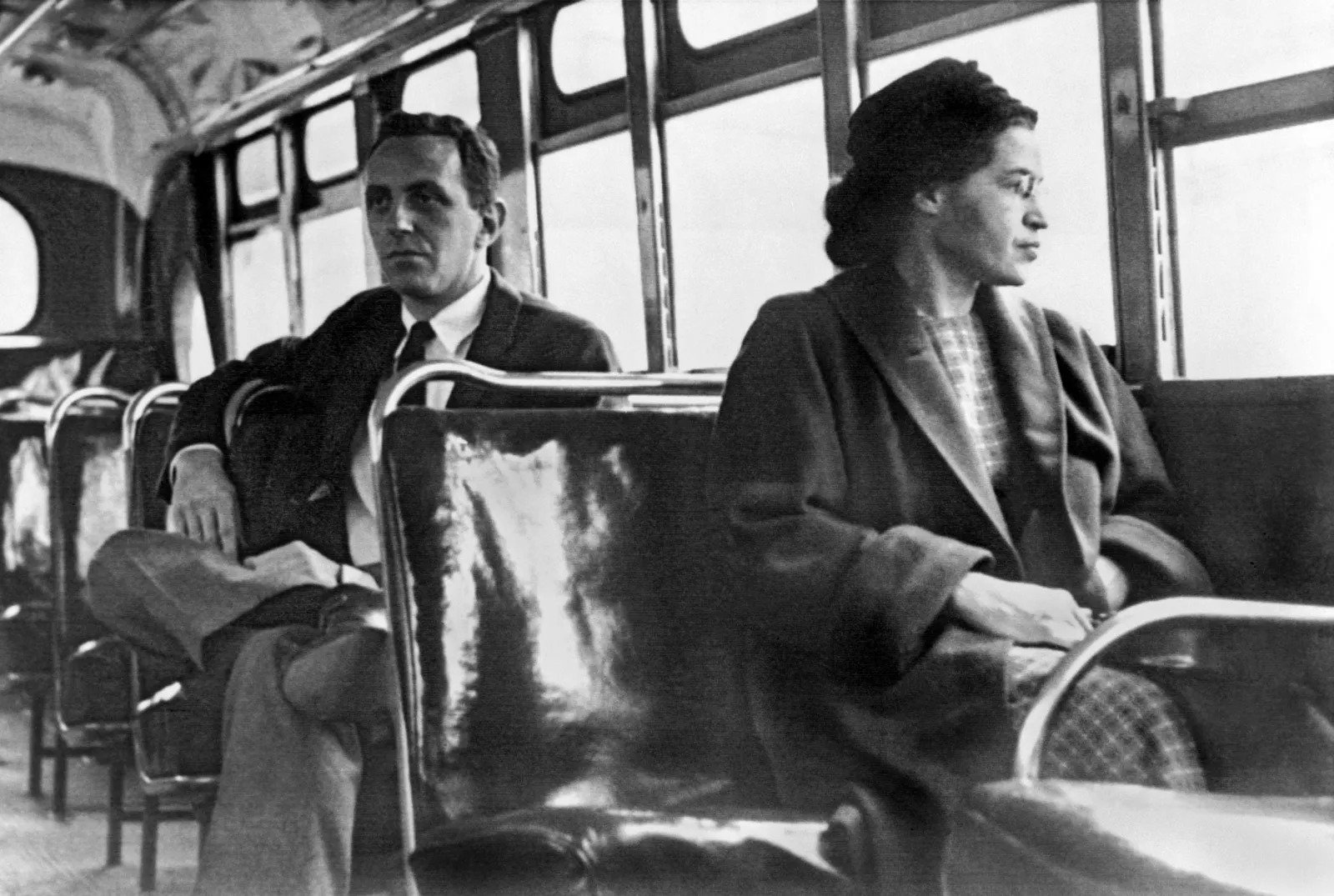
A neatly dressed, middle-aged black woman was riding home on a Montgomery, Alabama, bus on the evening of Thursday, December 1, 1955. Her lap was full of groceries, which she was going to have to carry home from the bus stop, and her feet were tired from a long day’s work.
Mrs. Rosa Parks was sitting in the first row of seats behind the section marked “Whites Only.” When she chose this seat, there had been plenty of empty ones both in front of and behind the “Great Divide.” Now they were all occupied, and black passengers were standing in the aisle at the rear.
